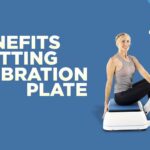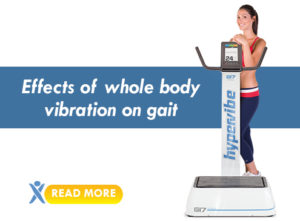New Studies on WBV Applications in Diabetes and COPD Patients
In a previous article, we’ve shown that whole body vibration was found to improve exercise capacity in patients with chronic obstructive pulmonary disease, a condition that damages the lungs and affects one’s breathing capacity.
COPD appears when the airways become narrower than normal due to the inflammation of the bronchial tubes and the accumulation of mucus. If the bronchial tubes become clogged and air can no longer pass through them efficiently, breathing is impaired and so is the delivery of oxygen to all the tissues and cells.
Exercising can be a real challenge for people with COPD, as even though this condition manifests differently from one patient to another and over time, there are still some common symptoms that make it difficult for one to practice conventional exercises.
The lungs of COPD sufferers don’t function at their maximum capacity and the amount of oxygen that reaches the organs is reduced as well, so this means that one’s energy levels and exercise capacity are also affected.
When one does exercise, symptoms like shortness of breath and wheezing, persistent cough with mucus or breathing difficulties can appear. Headaches and fatigue are also common, and for these reasons, people suffering from chronic obstructive pulmonary disease may prefer physical activities that are less demanding and don’t cause these symptoms to worsen.
Conventional workouts like cardio or aerobic exercises, as well as high-intensity intervals and even strength exercises that require a lot of effort from one’s lungs and cardiovascular system are generally avoided by COPD patients. However, whole body vibration seems to be a safe and viable alternative.
Whole body vibration machine exercises benefit COPD patients
A new meta-analysis conducted by Brazilian researchers and published in the journal of Respiratory care suggests that whole body vibration machine exercises can improve the exercise capacity in patients with chronic obstructive pulmonary disease, without causing unwanted effects.
The analysis included 185 subjects from 4 studies, all of them suffering from COPD and undergoing whole body vibration therapy. Results showed that exercising on a vibration plate helped all these patients improve the distance walked in the 6-min walking test, but only one of the studies included in this report found significant improvements in the quality of life in these patients.
Scientists who conducted this review concluded that vibration training can be an alternative to classical exercise for people with COPD, contributing to improved exercise capacity without causing side effects.
Similar results were obtained by Chinese researchers, who showed that training on a vibration machine may improve the functional exercise capacity and quality of life in patients affected by chronic obstructive pulmonary disease. In a previous research paper published by German scientists, vibration exercises were found to contribute not only to an improved exercise capacity but also to a better muscular function in patients with COPD.
WBV therapy can be safely used in diabetes type 2 patients
Patients with chronic obstructive pulmonary disease aren’t the only ones who can benefit greatly from whole body vibration exercises. Those suffering from type 2 diabetes may also experience improvements in their overall health state by incorporating WBV in their training routine, studies suggest.
A recent paper published in the Brazilian Journal of physical therapy showed that exercising on a vibrating plate can improve glycemic control in diabetes sufferers, increasing the level of physical activity in this group of patients without causing side effects.
For this study, a series of controlled trials were analyzed, the effects of whole body vibration on blood sugar levels, physical and functional capacity, as well as physical cardiovascular risk factors, being compared to those obtained through conventional exercises.
Results showed that 12 weeks of vibration therapy can lead to improvements in the mentioned parameters, and WBV interventions can provide significant reductions in 12 hours fasting blood glucose levels, compared to no intervention.
6 weeks of whole body vibration training were found to be effective in improving muscle strength and balance in patients with diabetes type 2, suffering from peripheral neuropathy. Based on these results, we can say that WBV can be a good alternative to conventional exercise in both COPD and diabetes type 2 patients.
Have something to add to this article? Comment below or join our Facebook community and share your thoughts with us!















